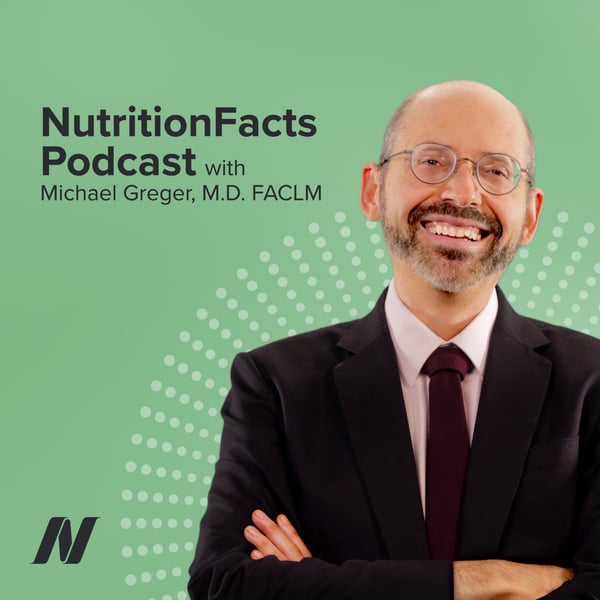COVID-19 Series: Can We Prevent the Next Pandemic?
Nutrition Facts with Dr. Greger
[email protected]
4.8 • 3.6K Ratings
🗓️ 12 November 2020
⏱️ 14 minutes
🧾️ Download transcript
Summary
This episode features audio from How to Prevent the Next Pandemic. Visit the video pages for all sources and doctor's notes related to this podcast.
Transcript
Click on a timestamp to play from that location
| 0:00.0 | Welcome to the Nutrition Facts Podcast. I'm your host, Dr. Michael Greger. Many of us are feeling |
| 0:07.2 | helpless in the face of the current pandemic, but the good news is there are things we can do right now |
| 0:12.8 | to reduce our risk of falling seriously ill and dying from COVID-19 and preventing even greater |
| 0:18.9 | infectious disease threats in the future. Today we ask how do we prevent the next pandemic? |
| 0:26.4 | And the answer has to do with changing our food system. |
| 0:31.5 | Inventious diseases are emerging globally at an unprecedented rate. |
| 0:36.0 | Literally hundreds of new pathogens have emerged, re-emerged for the last few decades, |
| 0:41.0 | and what we eat is responsible for most of the new diseases that have jumped from animals to humans. |
| 0:48.7 | In response to the torrent of emerging zoonotic or animal to human diseases, |
| 0:54.1 | three of the world's leading authorities, the World Health Organization, the Food and Agriculture |
| 0:58.4 | Organization, the United Nations, and the World Organization for Animal Health, held a joint |
| 1:03.6 | consultation to determine the key underlying causes. First on their list was the increasing demand |
| 1:10.1 | for animal protein. The greatest swords of democles dangling are the H5 and H7, |
| 1:17.0 | bird flu viruses, blanketing much of the earth. A bird flu pandemic could be devastating, |
| 1:22.9 | given their current upwards of Ebola-like flip of the coin death rates. Given that the emergence |
| 1:28.7 | of these deadly bird flu viruses, H5 and H7 and H9, are linked to intensification of the poultry sector, |
| 1:35.5 | there have been calls for the de-industrialization of animal production. For example, |
| 1:40.8 | suggested here in the annals of the New York Academy of Sciences, we're placing large industrial |
| 1:45.4 | units with smaller farms with lower stocking densities, potentially resulting in less stress, |
| 1:50.4 | less disease susceptibility, less intense infectious contact, and smaller infectious loads. |
| 1:57.4 | Maybe they're the ones that could use little social distancing. The American Public Health |
| 2:02.7 | Association, the largest and oldest association of public health professionals in the world, |
... |
Please login to see the full transcript.
Disclaimer: The podcast and artwork embedded on this page are from [email protected], and are the property of its owner and not affiliated with or endorsed by Tapesearch.
Generated transcripts are the property of [email protected] and are distributed freely under the Fair Use doctrine. Transcripts generated by Tapesearch are not guaranteed to be accurate.
Copyright © Tapesearch 2025.

